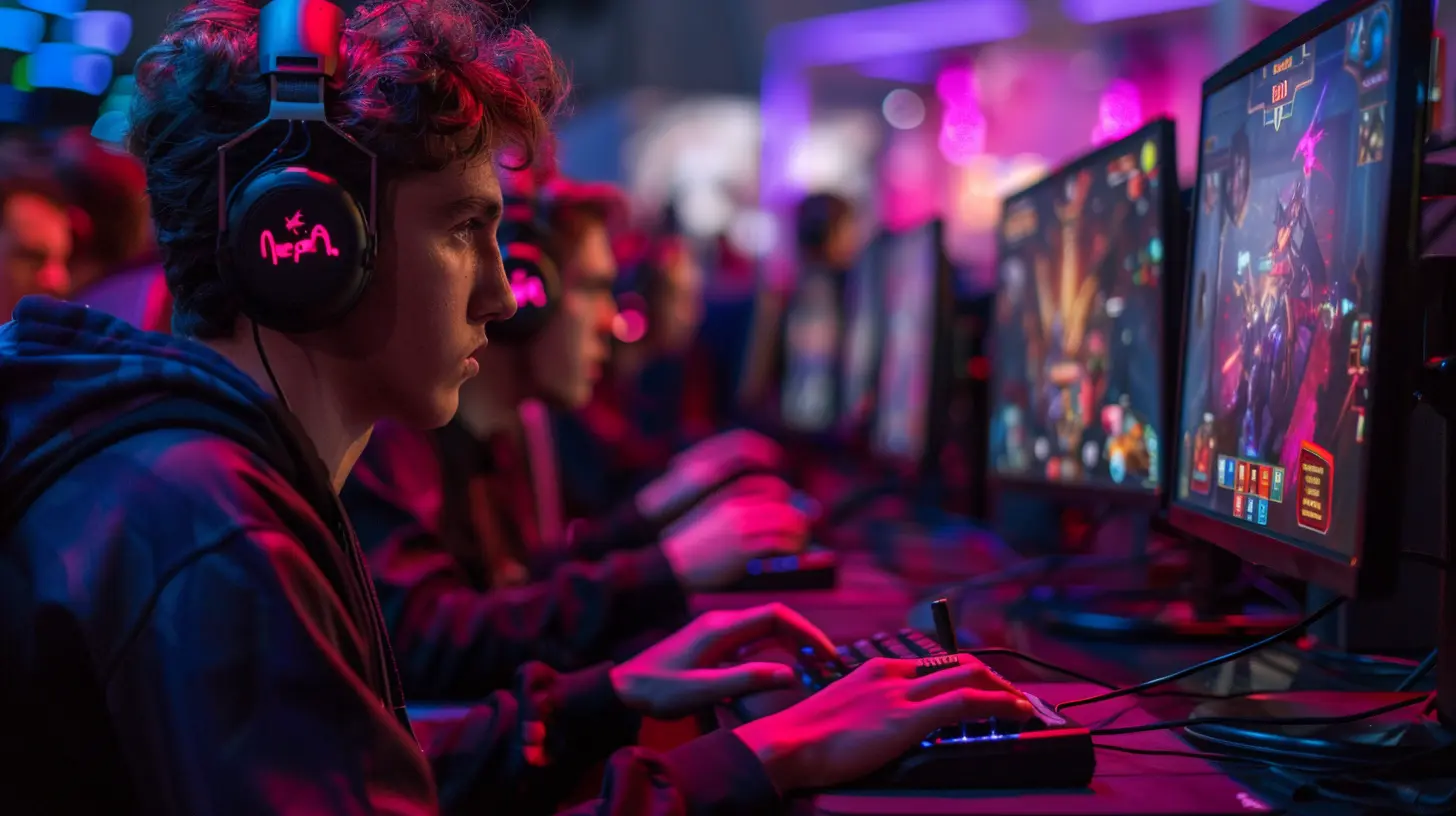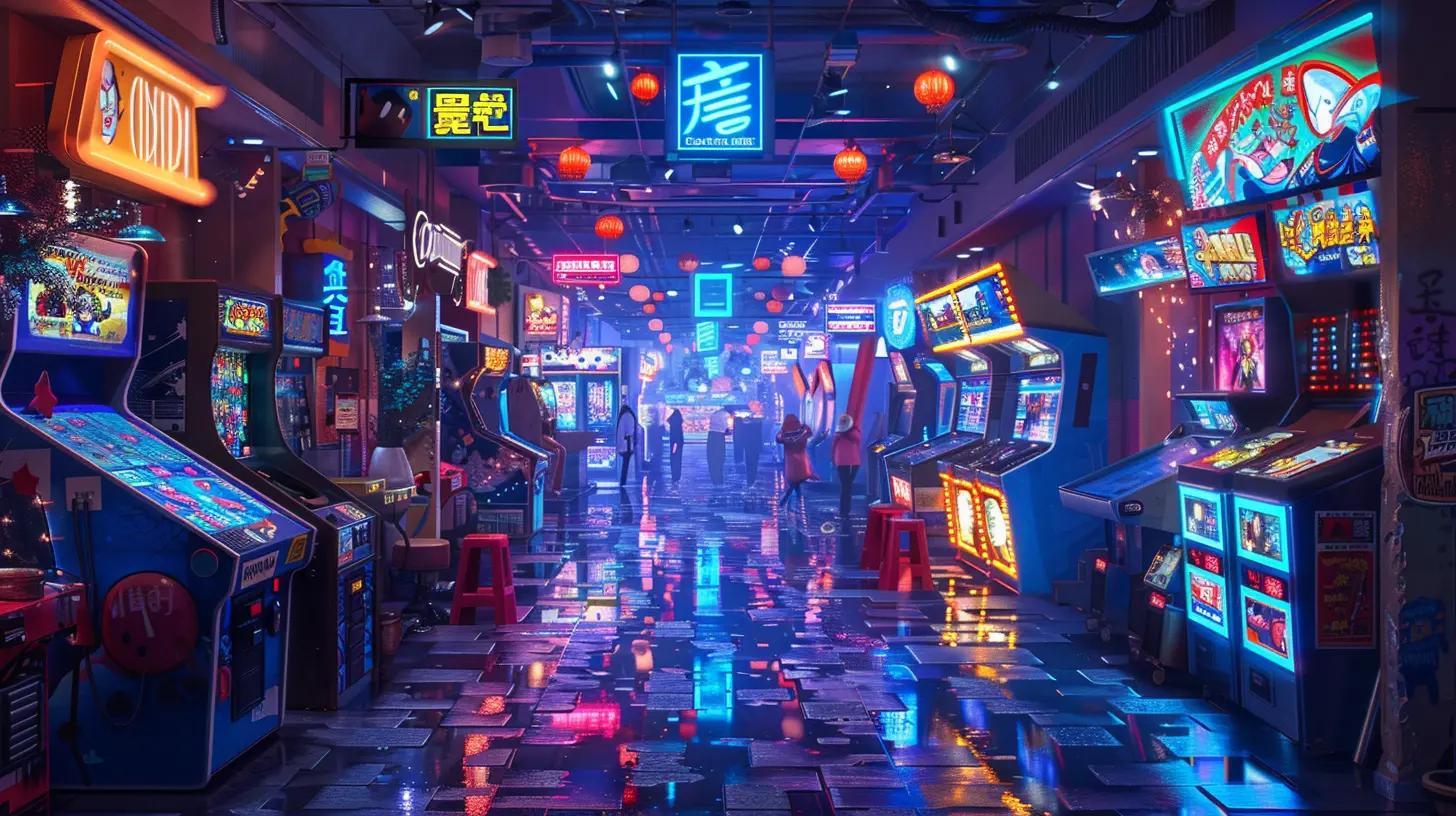Arcade Games: The Origins of Competitive eSports
8 September 2025
Let’s face it — eSports didn’t just pop out of nowhere. Before the flashy million-dollar tournaments and professional gaming leagues you see on Twitch or YouTube, there was a time when gaming was raw, loud, and filled with quarters clinking in pockets. Yeah, we’re talking about the golden age of arcade games. Believe it or not, those buzzing cabinets with their neon lights and joystick-bound glory laid the foundation for what we know today as competitive eSports.
So, how did a bunch of machines in dimly lit corners of pizza joints evolve into the massive global eSports scene? Buckle up and grab some popcorn, because we’re about to take a nostalgic ride through time and uncover how arcade games sparked a digital revolution of competition.
The Arcade Era – When Gaming Was a Social Sport
Before online multiplayer, before LAN parties, heck, even before the first home consoles took off — arcades were the beating heart of gaming. Think 70s and 80s vibes: funky soundtracks, cha-ching of coins, and kids huddled around machines like "Pac-Man", "Donkey Kong", and "Street Fighter".What made arcades different? Competition was face-to-face. Eye contact, sweaty palms, and an audience of friends and strangers watching every move. You didn’t just play for fun — you played to win. That’s where it all started. No usernames anonymously hiding behind screens. Just you, the joystick, and whoever was gutsy enough to challenge you.
Arcades weren’t just gaming hubs — they were battlefields.
Birth of the High Score Culture
One of the first things to push arcade gaming toward competition was the simple idea of the high score. That little scoreboard at the top of the screen? It turned casual players into hardcore contenders overnight.People weren’t just playing to pass time — they were playing to get their initials burned into digital immortality. Ever see three letters like “AAA” or “ACE” and wonder who that was? That was someone chasing glory. That was someone you had to beat.
Games like Space Invaders, Galaga, and Asteroids fueled this obsession. High scores became bragging rights, and arcades became pressure cookers of pure competitive energy.
The Moment it Became a “Sport”
Alright, let’s get real. When did gaming shift from just goofing around to something serious — something resembling sports?That moment came in 1980, with the first-ever video game tournament: The Space Invaders Championship hosted by Atari. Over 10,000 players participated across the U.S., all vying for the top spot. That’s right — even before the term "eSports" existed, people were already queuing up in droves for a shot at glory.
This event was mind-blowing. It showed the world that people would not only play competitively but show up in mass for it. That moment lit the fuse, and what followed was a series of competitions, challenges, magazines, and even TV segments highlighting game champions.
Competitive gaming had officially entered the chat.
The Rise of Fighting Games: Where Skills Took Center Stage
Arcades evolved quickly. As the 90s rolled in, a whole new genre brought competition to a boiling point: fighting games.Games like Street Fighter II, Mortal Kombat, and later Tekken turned arcades into gladiator arenas. These weren’t just about getting a high score — they were about beating the person next to you.
Street Fighter II, in particular, changed the game (literally). It introduced the concept of head-to-head matches, where two players could directly compete, rather than taking turns. This format was addictive. If you lost, you stood aside. If you won, you stayed. Simple as that.
That competitive energy? Pure eSports DNA.
Players practiced for hours. Strategies evolved. Characters developed iconic reputations. And stories of "the local champ" who couldn’t be beaten became the stuff of legend.
Leaderboards, Rivalries, and the Birth of Competitive Communities
You might think Discord servers and Twitch chats were the first gaming communities, but arcade culture already had it going on.Gamers formed local rivalries. They met regularly. They shared techniques, debated character matchups, and traded stories of epic wins or heartbreaking losses. It was primitive by today’s standards, but it was real community.
People traveled to bigger arcades just to find better competition. Word spread about top players. Magazines like Electronic Games began listing top scores and reporting on tournaments — the early version of gaming news outlets.
And then came Twin Galaxies, the organization that would start tracking world records officially. They even got some events televised on shows like "Starcade". This was early broadcasting — the seed of Twitch and YouTube gaming content.
Arcades Taught Gamers One Vital Thing: Pressure
Think about this. Online gaming has its own kind of stress, sure — lag, trolls, maybe even a rage quit or two. But can you imagine losing in front of a crowd of 10 kids, all cheering or booing? Can you imagine your opponent staring you down with a smirk as your last life ticks away?That’s arcade pressure. Real-time, public, and absolutely unforgiving.
This kind of high-stakes environment trained a generation of gamers for clutch moments. It built mental toughness. It refined reflexes. And it laid the groundwork for the kind of nerves that modern pros need to survive on the big stage.
Arcade players were the OG esports athletes — they just didn’t have jerseys or sponsors (yet).
The Downfall of Arcades – But Not the End
By the late 90s and early 2000s, home gaming started taking off like crazy. Consoles were getting better, online multiplayer became a thing, and arcades slowly started to vanish from malls and street corners.But here’s the twist: arcade-style competition didn’t die — it mutated.
Games like Halo, Counter-Strike, and StarCraft picked up the competitive torch. But guess what? The spirit — the fire — was still from the arcades. Face-offs, ranked ladders, tournaments, and regional showdowns — all of it was rooted in the same culture that started with two kids battling in an arcade over pizza money.
The Legacy Lives On
Today, we watch massive eSports tournaments with lights, announcers, and millions of viewers. But if you scratch beneath the surface, you’ll find the soul of arcade culture still kicking.Fighting game communities (FGCs) are especially loyal to their roots. Events like EVO (Evolution Championship Series) continue to bring players from around the globe to compete in games like Street Fighter and Mortal Kombat — stuff that began in arcades!
Even retro arcade tournaments have made a comeback, thanks to passionate fanbases and the love of classic competitive gameplay.
And let’s not forget: some of the earliest eSports legends started with arcades. Names like Billy Mitchell and Steve Wiebe (remember the "King of Kong" documentary?) helped shape the idea of players as personalities, long before modern streamers came along.
Why This Matters to Today’s Gamers
If you're deep into eSports now — whether you're grinding in League of Legends, shooting your shot in Valorant, or dominating in Warzone — you owe a massive thank you to arcade gaming.Arcades are the roots. The dirty, coin-fed, joystick-slamming roots of competitive gaming.
They taught us that losing sucks, but getting better is awesome. They taught us to respect our opponents, fight for the win, and never back down from a good challenge.
Understanding where eSports came from gives the scene more depth, more appreciation. It shows that every competition has a history, every champion a shadow of a quarter-based warrior behind them.
Final Thoughts
So next time you hear the clack of an arcade button or walk past a beat-up cabinet game in a bar, take a second. You're looking at the birthplace of competitive gaming. What started as local battles in smoky arcades turned into a multi-billion-dollar global industry.Arcade games didn’t just entertain — they inspired. They transformed gamers into competitors and competition into a scene that today commands the attention of millions.
Who knew that a couple of joysticks and a glowing screen would one day create a whole new world of sports? Now you do.
all images in this post were generated using AI tools
Category:
Arcade GamesAuthor:

Greyson McVeigh
Discussion
rate this article
1 comments
Blaze Hall
Ah, the glorious days of arcade cabinets and pixelated battles! It’s incredible to think that our weekend joys of high scores and button mashing paved the way for today’s eSports extravaganzas. Let’s raise a joystick to the origins of competition—where every coin dropped was a leap into gaming history! 🎮✨
October 5, 2025 at 2:24 PM

Greyson McVeigh
Absolutely! The nostalgia of arcade days laid the foundation for today’s vibrant eSports scene—it's amazing to see how far we've come from those pixelated battles! 🎮✨


